#Wajin
Text
the way jpn sees the subject of colonization and writes it...thinking about it after reading gk and that omega questline is like. the dominating form of japanese nationalism and a lot of the justification for japanese expansion is said to be because of fear of the west and so they see the conquering of territories as defensive in order to gain the power needed to resist being consumed by another (simplification) and they believe this is the same all the way down & this is why you get takes like "it's ignorant and based on irrational emotion to NOT assimilate into our country" and draw parallels between people opposing colonization to people whose entire way of life is structured around enforcing it without considering the context. xiv tries to like, refute the means of it by assigning this way of thought to villainous characters like omega and the imperials who suffer and self-destruct as a result of their endless expansion and conquests but at the same time never challenges the idea that perhaps the way they see the threat in itself is warped and the Well you would be better off if you were just All One Race One People One Nation (also it has to be OUR race/people/nation) thing. w/ the existence of amaurot as a near-utopia that confirms this it's like....i'm being a little uncharitable here because hermes and venat counteract that position & a large part of the moon arc is about how this wouldnt work (even if it's written as 'because NOW people have pesky differences' it also does acknowledge those differences provide meaning and color to human life). gk is similar in assigning this thought to tsurumi who is undeniably evil and is shown to ultimately be extremely empty and the exhilaration he gets from the violence of conquest had long subsumed any meaning to his ideals but just like xiv it very much shys away from explicitly going into...who is at fault and the true extent of suffering and human indignity caused by colonization and why they believe their nation's way of life is by default automatically superior. what I was talking about before with jp writers only seemingly being able to write from the pov of the imperialist and not the people they subjugate. even this line:

is not referring to the atrocities they inflict on the "other" but rather the self-inflicted tragedy of the cost of war. "we made our own people suffer in our conquest" is always the great big mast of their anti-imperialist writing while any acknowledgement of anyone outside their borders is minimal or clumsy at best. is my onion
#AGAINNNN i dont mean this in a the writers are EVIL way#they try in some parts and fail.#they skirt close to it with characters like kiro but fail to really like...have focus and be clear and straightforward that like#wajin expansion is THE cause of the decimation of the ainu who had existed as they were for ages before#again im not saying they deny it and they even get close but it's always like 30 degrees to the right of it#and gk itself is not wrong for focusing on the reason being capitalist expansion & feeding a war machine beyond just 'it's japan' but ya
12 notes
·
View notes
Text

NO BARBENHEIMER
I find it very upsetting that there are so many stupid people out there enjoying the Birbenheimer meme and I fear for the future of this world.(As the context shows, I am criticising memes that consume the atomic bomb. I am not simply accusing people of hustling two films. Well, I also don't understand those who continue to use the term Barbenheimer, which has been hijacked by mushroom clouds.)
It is true that the Japanese military committed many atrocities and there were citizens who supported them, but that does not mean that it is okay to drop such horrible weapons. The bombed areas were where the citizens lived. It is the citizens, not the military, who have suffered from this damage. Among the Hibakusha(A-bomb victim) were newborn babies and small children, as well as Korean and Chinese residents in Japan. And, of course, the captured Allied soldiers. In Nagasaki it was dropped right over the church. And not only people, but also plants, trees, fish, dogs and cats died. Those who were near the blast centre were scattered by the blast and disappeared as if they had evaporated, leaving their shadows on the ground and walls like stains. Those who were barely breathing, their skin blistered and moaning for water, jumped into the river, which in turn filled up with dead people. Some eyeballs were spilling out due to the intense heat rays. Nuclear weapons are very frightening. Many others have also sacrificed their lives for nuclear development. And some people still suffer from its aftereffects to this day.
Have you ever seen a photograph of an hibakusha? Have you ever seen a photograph in which the shadow of the hibakusha remains as a stain? If not, then look at reality. Then you won't be able to call this meme just a joke.
It is necessary for the Wajin people to reflect on the atrocious and diabolical acts of the past, and it is equally necessary to criticise the terrible weapons that some countries still possess today. Don't do whataboutism.
The Japanese Government seems to have forgotten not only the atrocities of the past, but also the horror of the atomic bomb. This is extremely frightening. Please put an end to this ridiculous meme now.
Imagine how many people actually collapse and groan under the pink mushroom cloud, the people who were in Hiroshima and Nagasaki, the indigenous people who lived on the land where the nuclear tests were carried out. That weapons exist in this world today and that the tragedy could once again visit anyone anywhere.
Feminists, you haven't forgotten the American culture that has frivolously associated female eroticism with weapons (why do you call a bikini a bikini, women in mushroom cloud costumes), have you? Despite Barbie's attempts to destroy the image of the silly blonde woman, the official Twitter account is positive about this meme. Join us in saying NO.
全ての戦争に反対し、核兵器の廃絶を願う一市民としてこのミームを許しません。
p.s. This text may be difficult to read. I've rewritten and rewritten and rewritten and rewritten again and again because I can't stop being indignant.
294 notes
·
View notes
Note
Hey! What books by POC got a majority yes result? I'm interested in reading more by authors of color but when I used the be loathed Tumblr search function the only posts it brought up as tagged 'result: yes' were by white authors. Also, any personal recommendations for sci fi by POC?
hello! don’t mistake the stats — no books by authors of color have gotten a yes result either here or on the fantasy blog, and I don’t think any are likely to at this point (if Jemisin’s The Fifth Season couldn’t do it on the fantasy blog, I highly doubt anything else will); authors of color simply have an average yes percentage here that’s only slightly lower than the average percentage for white authors.
I’m happy to give my own recommendations, though:
any of Samuel R. Delany’s sci-fi. I think Nova is maybe the most approachable starting point (and quite good in its own right), but if you want to jump off the deep end, I think Stars in My Pocket Like Grains of Sand is the greatest science fiction novel ever written; whether or not one agrees with that statement, I think it is pretty unequivocally the most science fiction novel ever written, by which I mean that no other book I’ve encountered or heard of has made such a thorough use of everything science fiction can be and do as Stars.
I also would be remiss to not recommend Octavia E. Butler; I’m personally not a huge fan of her books, but I do think every sci-fi reader should read at least one of them. the Earthseed duology (Parable of the Sower and Parable of the Talents) is probably most-discussed in recent years because they seem to parallel current developments in US politics, and the Xenogenesis trilogy (first book Dawn) is also considered a classic.
the elements of it that read as (at least potentially) science fiction upon publication now read as fantasy, but if you’re interested in something older, Pauline Hopkins’s Of One Blood, or The Hidden Self is an early work of science fiction/fantasy by a Black writer — it was serialized in 1903. it’s part lost world narrative, part last gasp of (pseudo)scientific mesmerism/animal magnetism theory, part troubled romance (caught up in turn-of-the-century racial politics).
Zainab Amadahy’s novel The Moons of Palmares is a cool (though a little short) novel about a racially diverse mining colony trying to break away from Earth’s capitalist / colonial domination.
I’ve enjoyed several of Aliette de Bodard’s Universe of Xuya books, which are mainly short — I think the first I read was On a Red Station, Drifting, and I also enjoyed The Tea Master and the Detective (even though I often don’t really care for Sherlock Holmes adaptations) and The Citadel of Weeping Pearls.
if you like science fantasy, I loved Jacqueline Koyanagi’s Ascension when I read it back in 2014. it hits a lot of ~found family~ notes that I think would appeal to what people on tumblr (say they) like.
I also would recommend any of Yoon Ha Lee’s books; I think the best starting point for his work is his short story collection Conservation of Shadows, which is incredible and also contains “The Battle of Candle Arc”, which I think is the best intro / preparatory reading for his Machineries of Empire trilogy (first book Ninefox Gambit), which is excellent (though very dark) but can be challenging to get into.
I read and enjoyed a lot of Nnedi Okorafor’s books in the past, although I haven’t read most of her more recent stuff, and I would particularly recommend Lagoon, as well as her short story collection Kabu Kabu, which includes some excellent sci-fi stories, especially “Spider the Artist” (also available online).
if by any chance you read Spanish, I can’t recommend Edmundo Paz Soldán’s Iris highly enough — incredible, deeply fucked-up novel about an anticolonial war in a corporate dystopia somewhere in ambiguously Latin America-slash-Oceania.
also “authors of color” isn’t necessarily the right rubric for these, since he’s Wajin in Japan, but if you like military sci-fi I’ve been really enjoying Tanaka Yoshiki’s Legend of the Galactic Heroes novels, although tragically Tyran Grillo’s translations of the middle novels are very bad.
Masande Ntshanga’s Triangulum was something I’d picked up entirely on spec at a bookstore a few years ago and it absolutely blew me away — I’ve been recommending it to everyone.
if you liked The Locked Tomb and ever found yourself thinking, “what if this decadent space empire ran on sex magic instead of necromancy”, I’d highly recommend Bendi Barrett’s Empire of the Feast
and some other short fiction collections (some with the same caveat re the utility of “POC” as Tanaka Yoshiki):
Gillian Ybabez, Homeward Bound, and other stories includes some sci-fi and some science fantasy, published as part of the now sadly defunct Trans Women Writers Collective booklet series and is still available through its successor, River Furnace.
Ted Chiang, Stories of Your Life and Others (now sometimes titled Arrival)
Hassan Blasim (ed.), Iraq + 100
Basma Ghalayini (ed.), Palestine + 100
Sofia Samatar, Tender — Samatar is imo the greatest living fantasy author, but this collection is also about 50% sci-fi and she’s just as good at sci-fi.
most of it is realist but I have to mention Leanne Betasamosake Simpson’s This Accident of Being Lost, which has two excellent sci-fi stories (“Big Water” and “Akiden Boreal”); Simpson has imo perfect prose — never a word out of place.
Sunyoung Park and Sang Joon Park (ed.), Readymade Bodhisattva
Michel Jean (ed.), Wapke, which was originally published in French but is apparently now also available in English
it wasn’t all my preferred kind of specfic, but Chelsea Vowel’s Buffalo Is the New Buffalo is worth a read in any case.
34 notes
·
View notes
Note
i am literally incapable of just saying "vagina" and i say "vajoozle" instead
i am 30 years old
Okay so I usually say Wajine for basically no reason except for a cum town episode
54 notes
·
View notes
Text
Noda's interview for Yomiuri online paper
this interview came out in 3 parts, and i posted parts 1 and 2 yesterday & translated part 3 today. i assumed that they'd come out at longer intervals, which is why i didn't want to wait to compile them but since they came out one after another across 3 days i figure it's best to have them all as a whole interview after all. if you've read parts 1 and 2 just scroll down to the last one. (admittedly there's a lot of scrolling, this thing ended up being a monster)
as always, sharing anywhere is fine but please credit me and stop posting my translations on twitter without crediting.

Part 1
Q: What did you feel when you were done drawing the last panel of the last chapter? How did it feel to say goodbye to this work that was with you for the last 8 years?
Noda: While I did think, “Oh, so it’s finally over”, there were some things that i insisted on keeping, so I requested space for five additional pages, including a preview for my next work. Even after finishing the manuscripts I still have projects such as work on the volumes, supervision of the anime and the live action. It wasn’t a “goodbye” situation at all, therefore I had no time to feel deeply moved yet.
Q: Your story is about a gold hunt set post the Russo-Japanese War, involving the Ainu and Wajin, northern ethnic minorities and even Russia. What was the impetus for it?
Noda: My great-grandfather was a soldier of the 7th Division who participated in the Siege of Port Arthur, and I was considering illustrating a story about that. Right around that time, my editor, Mr. Okuma (Hakko), brought me a novel set in Hokkaido called “Ginrouou” (The Silver Wolf King") by Kumagai Tatsuya, which was very interesting.
The main character was a hunter named Nihei. My previous work, “Supinamarada!”, had an intense ice hockey coach named Nihei, so I felt like it’s somehow fateful and decided to combine the two. And if you try to depict the historical background in that setting, of course the Ainu, the Japanese, the northern minorities, and the Russians would all make an appearance.
In the early days some people have pointed out that it resembled Tezuka Osamu’s “Shumari” and Terasawa Buichi’s “Cobra”. However, having never read either, I thought to myself, “Oh shoot, it seems like the topics overlapped”. Now that the story has become a melting pot and the elements that were similar to those works got drowned, it seems like nobody is saying that anymore, though.
Q: Why did you choose to include real historical figures such as Hijikata Toshizou as major characters? What were your points of reference while looking for people to model the tattooed prisoners after?
Noda: Hijikata having an appearance was nothing but inevitable.
First of all, the idea was that when the code gets deciphered and the location of the gold gets revealed, it should be a place that readers across Japan could recognize at a glance. That obviously would be the famously star-shaped Goryokaku. I thought it would be exciting if Hijikata Toshizou went on a rampage at the site of that decisive battle.
In the movie “Forrest Gump”, Gump is present at several historical events that are actually the result of his own unwitting actions. I found that curious, so I wanted to include that element in my own story. For example, Ishikawa Tsuboku basing one of his historical verses on Superior Private Usami’s worst possible words*.
I knew that Saito Hajime** is still alive, but I thought it way too convenient to stray from the framework of Hokkaido history, so I never included him. Though I guess it would have been exciting if I did. With the perverts within the tattooed prisoners, at first glance it seems impossible that such a person could really exist, but once you learn that they really were modelled off someone, the story becomes strangely compelling.
This is especially true for Sugimoto. Once you learn about Funasaka Hiroshi***, it becomes rather difficult to deny his immortality.
(t/n:
*refers to this sequence in chapter 247

the historical tanka is his most famous, called “Labor”, and it goes like:
However long I work
Life remains a trial.
I just stare into my palms.
** Another former member of the Shinsengumi.
*** The guy Sugimoto was modelled after, more about him can be found here.)
Q: The exhibition also includes materials such as a model of Sugimoto’s Type 30 rifle, which is on display. What was the reason for such a deep focus on real materials in the process of creation?
Noda: It’s because both the quality and the efficiency of the art can be improved at the same time this way. Sometimes it is necessary to draw the angle of the gun to match the action, so it is easier for the assistant to depict it better if there is an actual gun at hand. If I give you a picture illustrating a gun sideways and ask you to draw one with the muzzle facing front, you’d have to be exceptionally good to be able to do it well, and it can take a lot of time. Also, it is quite difficult to draw a hand holding a gun. I just took pictures holding the gun and had them used for drawings.
At first, there was a person who made a small but elaborate model of Lt. Tsurumi’s Ikazuchi class destroyer, and the drawings around Abashiri Prison were based on it. However, there were some difficult parts to depict, so we had a different model artist build a large destroyer for us over the course of a year. Thanks to this, we were able to create a dynamic picture of the ship.
Q: Models of the dishes at the exhibition considered, it is said that the foods present in the manga were only those that you actually tasted yourself. What taste left the deepest impression on you?
Noda: Saying that it’s only foods I ate myself is a bit of an exaggeration… But there was the brain of the Ezo deer I hunted, and the Russian and Nivkh traditional dishes I tasted while in Sakhalin that I found profoundly memorable.
Q: Of the actual materials you collected, which were particularly difficult to obtain, or memorable to you in some way?
Noda: Asirpa’s makiri was the first thing that I got my hands on, so it’s very special. All Ainu tools are one of a kind, and, depending on the crafter, one can take years to complete.
Q: I understand that you have many other materials in addition to the ones present at the exhibition; how many items do you have in total?
Noda: I couldn’t tell you just how many. It’s really down to the littlest things. I have things such as shell casings from real guns, or, for example, the finger bones that Lt. Tsurumi is holding were drawn from a skeletal model of a hand that was dissasembled after purchase.
Q: The scenes of gunfights, sword fighting, judo, martial arts - they all feel very rigorous in depicting combat. How did you reference actual movement?
Noda: I put effort into showing things such as sense of speed and weight. The speed of the action in the actual manga will change drastically depending on which moment you choose to show, so it’s important to choose carefully. Depicting action in a way that conveys how the body is actually moving instead of covering up a crude scene with momentum is not easy. I’d have pictures of myself taken in movement, or using model dolls for posing, and other things discovered through the method of trial and error.
Q: You’ve admitted before that you’re fond of Tanigaki Genjirou, a former 7th Division soldier who ended up helping Sugimoto’s team. What is the reason for that?
Noda: Because he’s shaggy, he’s plump, and he’s cute. Don’t you agree that he’s just so cute?
Q: The special illustration that you did of Tanigaki for the exhibition really conveys your love for him. What kind of scene did you imagine? What is he holding in his hand?

Noda: He’s holding a kanemochi. I wanted it to look like he’s about to share his kanemochi with the viewer, an act of kindness and love. I’m not used to hand painting so I was about to give up a bunch of times it wouldn’t come out the way I wanted it to, but in the end if the people who viewed it smiled if only a little, I’d consider my efforts rewarded.
Part 2
Q: In pursuit of the gold, the story depicts the fierce battle with the 7th Division, which is led by Lieutenant Tsurumi. How did you come up with the 7th Division characters, such as Second Lieutenant Koito and Sergeant Tsukishima?
Noda: Lt. Tsurumi is wearing a military dolman which resembles human ribs by shape, add the head plate and he ends up looking like a glossy skull. I wanted to invoke the imagery of Shinigami with him. I love the character designs in the movie “Alien”, so I wanted to add a touch of that too. Frieza from “Dragon Ball” also has this glossy look and seems strong, right?
Second Lt. Koito and Sergeant Tsukishima were introduced with the intention of making them important figures in the Tsurumi faction. However, the way I ended up drawing Tsukishima’s reactions towards Edogai-kun was just so fun, so I figured I could get to the bottom of Tsukishima’s character if I made the two of them have a similar relationship. But they just gradually became dumber and dumber. It worked out well, however, since in the end that gap offered space for growth later on.
Introducing young men who would become Tsurumi fanboys also allowed me to emphasize his dodgy charm. I wanted to show the Navy as a military force as well, therefore Second Lt. Koito, as the son of a vice-admiral, proved very useful.
Q: Are there any characters or episodes that left you feeling particularly gratified?
Noda: Ogin the Viper and The Lightning Bandit were a real couple, and there is an Ainu legend that coincides very well with their story, so that arc felt especially smooth. Also the one about Anehata-sensei. The goal of it wasn’t to simply shock the audience with a provocative pervert. The underlying purpose was to introduce people to the nature of Hokkaido and some Kamuy of the Ainu in a non-conventional way. In the opinion of my editor, Mr. Okuma, the death of Ueji was the most well done, and I agree with him.
Q: Many characters, including Sugimoto and Tanigaki, are defined by being alluring and expressing a kind of male sexuality and strength at the forefront. What do you find interesting or are particular about when drawing them?
Noda: Despite being a married man myself, I still love men with beautiful bodies. Since I know that, in some cases, one can connect with members of their own sex much more deeply than those of the opposite one.
Q: Endgame was very hard on the readers since characters on both sides of the battle were dropping like flies. Presumably it must have been even harder on the author. Who were the ones who gave you the most trouble, or you were attached to the most?
Noda: “Will they be able to understand Ogata’s ending, I wonder?”, is something that gave me the slightest bit of concern.
Nevertheless, considering that Tsurumi stayed mysterious until the very finish line, I didn’t want to end this story with Ogata also being on the equivocal side. As a writing method I believe that, taken to the extreme, every character in the story should be evaluated in relation to the protagonists.
Back in Karafuto, Asirpa didn’t kill Ogata because she lacked the resolve of taking a human life. After she reunited with Sugimoto, she was reassured in how important he is to her. If it’s about protecting Sugimoto, she decided that she’s ready to go to hell. Seeing her determination, Sugimoto also resolves that he’s ready to take the VIP seats to hell with Asirpa. Which is why Asirpa was able to risk her life taking the land deed back. Ogata had a very important role in facilitating this whole process.
This is due to the fact that a lot of the readers were more interested in the relationship between the protagonists rather the whereabouts of the gold. Of course, Ogata had his own story to tell as his own individual character, so I prepared for and have drawn his resolution with a lot of care, in hopes that many readers would be satisfied with it.
Q: The expression on Lt. Tsurumi’s face as he gazed at the falling remains during the climactic battle to the death was also deeply moving and heartbreaking.
Noda: Regarding Tsurumi’s expression, I deliberately crafted an atmosphere around him so that the readers would hesitate to believe his words, no matter how sincere he’s being. I could have made him monologue about his true feelings and intentions at any given time, but I never did. I am a mangaka, so I always waited for this kind of opportunity to discard wordy explanations and convey my ideas through a facial expression.
Q: Sugimoto’s main motivation to participate in the gold hunt was to heal Umeko, the girl who was his childhood friend and whom he loved. However, in the last chapter, he gives his share of the gold to Umeko’s son, since her eyes were already healed. Why did you do that?
Noda: If Umeko had not remarried and her eyes weren’t healed, the story would have needed a few more chapters, which, considering that it was post-climax, would have made it drag on needlessly.
The reason for that is Toraji told Sugimoto to get together with Umeko before dying, and he is not the kind of guy who could have ignored that and return to Hokkaido with Asirpa. Besides, Umeko remarrying has been hinted towards at a few points throughout the story, so it was a foregone conclusion.
From her own perspective as a character, Umeko is also not just someone waiting for the hero to save her, but a strong woman who chose to remarry early for the sake of both herself and her son.
Perhaps some readers might have interpreted that as a waste of gold that Sugimoto risked his skin to get. But for me, Sugimoto keeping his promise was more noble, even as a formality. The man Umeko remarried owned a flower shop and even a greenhouse, which was rare for Japan of those times, so money seemed to not be a problem for them. But I think that if Umeko were to have another son, Toraji’s would have rebelled and refused to take over the flower shop, saying that he doesn’t want to feel indebted to his step-father. I think he’d try to become independent, and that share of gold would have helped him with that. But I think that rather than the gold itself, Toraji’s son learning that his father has died as a hero was much more valuable.
Q: The relationship between Sugimoto and Asirpa could only be described as “partners”, with no romantic elements, until the end. Did you plan to keep it like that since the very beginning, or was it a natural development?
Noda: I decided from the very beginning that I would not show Sugimoto and Asirpa as romantically involved in the end. Asirpa’s crush felt natural for the character so I included it, and since it was related to the later events, it was part of my calculations.
Q: It seems that you have decided on the last panel many years ago. What was the reason for it?
Noda: I don’t remember when exactly, but towards the end of 2019 I sent an e-mail to the historical supervisor, Mr. Goto Kazunobu, asking him what he thinks of this kind of punchline and whether a bill or a coin would work better. I think it’s the best when the thick of the action ends with the chapter before last, and the very last one works as an epilogue. Isn’t it nice when you can end it quietly and safely? It’s alright to make a short story edgy and twisted and give it a bad ending, but in the case of one that lasts for 31 volumes, I knew that in order to placate most of the audience I’d have to take them head-on and overpower them with no question. So I wanted to make them laugh all the way through. And I think I reached my goal.
Part 3
Q: In the scene where they find the gold in Goryokaku, gold dust rains down on Sugimoto and Asirpa, reminding us of the famous passage from "A Collection of the Ainu Epics of the gods" edited and translated by Chiri Yukie: "Silver droplets fall fall all around me, golden droplets fall fall all around me".
Noda: I envisioned gold dust pouring on them like rain from the very beginning. I wanted it to be a dramatic scene. As to Chiri Yukie's passage, it was my editor, Mr. Okuma, who added that tag line. I myself have completely forgotten about that poem. So when I saw the final product for the first time in the magazine, it has surprised and moved me just how fitting to a T that passage was. It seemed like I drew the whole thing just for it.
Q: The narration in the very last chapter talking about Ainu culture being passed down thanks to the cooperation between Ainu and Wajin people was also impressive.
Noda: It's something I have experienced firsthand due to my involvement in creating this work.
The Ainu created the culture and passed it on to their descendants. On the other hand, there were many Japanese scholars who recorded and studied it.
The aforementioned "Collection of the Ainu Epics of the gods", which I used as one of my creative materials, was compiled back in Taisho era in cooperation between Kindaichi Kyosuke, a linguist and founder of Ainu language research, and Chiri Yukie, an Ainu woman. Yukie's younger brother, Chiri Mashiho, became a disciple of Kindaichi Kyosuke and, in cooperation with Japanese scholars, established the field of Ainu studies. Sarashino Genzo, a researcher, has written about Ainu culture in eastern Hokkaido and left behind many, many materials. I own a large amount of out-of-print documents, many of which were written by Ainu and Japanese researchers.
During my time doing research for this work, I have met with many Ainu people who are involved in the preservation of Ainu culture and the study of Ainu folk tools, such as Dr. Kitahara Jirota Mokottunas, associate professor at Hokkaido University; as well as many Ainu craftspeople, such as Mr. Kaizawa Toru, who has inherited Ainu folk tools from his ancestors.
Mr. Urakawa Tahachi, an Ainu craftsman and hunter, has told me that if you make a makiri of your own, someday someone might see it and want to make their own resembling it. He has donated many of his own tools to various museums. I think that it is very important in terms of culture preservation that Ainu artifacts are kept in museums. I have seen contemporary Ainu craftspeople relearn Ainu culture from the materials they find in this or that museum collection, use them as references, and apply them to their own work.
On the other hand, many of the researchers and museum curators who have kindly offered me their help, who have a wealth of knowledge about Ainu culture and are working to preserve and protect it, are also Japanese. One of them, Mr. Sekine Kenji, an Ainu language instructor, has positively shocked me with his abundance of knowledge, and I even had the opportunity to sit at one of his lectures where he taught Ainu children about Ainu language and traditional dances.
Above all, the greatest help from the very beginning was provided by Mr. Nakagawa Hiroshi, professor emeritus at Chiba University, who has taught the Ainu language for many years, promoted it among many people, and has written books about it. Ainu people with whom I am still in contact have also noted that Mr. Nakagawa's presence is extremely significant.
The persecution and discrimination of the Ainu by the Japanese is clearly depicted in the very first volume of Golden Kamuy, and the buried Ainu gold, which is the whole premise of this manga, was originally intended to be used as military funds against their exploitation and discrimination at the hands of the Japanese in the first place. I have also included depictions of the oppression of ethnic minorities by the Japanese and Russian governments, which is an uncomfortable sight for a Japanese audience.
Still, Ainu culture could be passed down thanks to the cooperation between the Ainu and the Japanese. It's factual, and I wanted to include this positive note somehow, so I made it into narration.
Q: Do you always alter the contents of the volumes because of the time and space restrictions that come with weekly serialization? Why are you focusing so much on the quality of the work that goes into the volume?
Noda: I'm not the only mangaka who adds additional stuff to the volume releases, so I don't think it's much of a big deal. Since your work will be preserved as manga volumes, I think it's only natural to want to correct your mistakes and better the quality before their final release. Though of course I'm not saying that it's an excuse to slack off on your weekly releases.
For example, I am strictly against making it so you couldn't follow the plot well unless you read the volumes. Up until now I've done everything I could to provide the absolute best product I could deliver in a single week. However, since it's weekly serialization, it's not that I have leisurely time to redraw something over and over again until I'm absolutely satisfied with the result. Panelling and rough sketching alone takes 2 days, and mangaka are people too, we have to go to the bank and the city office, plan trips to the dermatologist and the dentist, we worry about our parents. And I had to finish my chores within one day, so I only had about 4 days to focus on manga undividedly. If we exclude sleeping, it's 18 hours per day. 18 times 4, it's 72 hours per week in total. Since a chapter is 18 pages, the base line is 4 hours per page, though I can never manage my time this neatly so I always ended up pulling all-nighters. In serialization it's the deadline, not you, that decides when you will done with your work.
And so you've pushed it to the limit, finally finished it, and sent it to your supervisor - and now it's time for the regrets. "If only I had one more hour, I could have drawn this much more nicely!", "If only I had a bit more time, I could have come up with a better line!", stuff like this. I'd leave the magazine in the toilet and reread it every day, brooding over my bad panelling and over what kind of things I could have added to depict the scene better so that the audience could gain a deeper understanding of it. During hiatuses and breaks I'd spend the entire week on working on the volume. Volumes have sparser releases than weekly magazines so it allows more time to work on them, but even that considered I couldn't take a single day off even during breaks because I still had to do serialization work immediately after. Even then I'd still have not enough time, so I had to cut down on sleep and other things and work on both simultaneously, and it would go on like that for years. I pushed myself like this because I wanted the final product to be the best of what I can do, quality-wise. If you feel sorry for me, please buy the volumes.
Q: You've probably been asked this before, but what made you want to become a mangaka?
Noda: I dreamed of being a movie director, but since I grew up in the Hokkaido countryside, I didn't know how to work my way around it. Both of my parents had their hands full with their own affairs too. I figured that as a mangaka I'd have full authority over my own stories, so I once sent a work to a magazine competition to test out the waters. Receiving awards from Weekly Shounen Jump and Weekly Young Magazine was what made me decide to tell my parents that I'm serious about becoming a mangaka. The editor liked my work and recommended me for the awards seemed to be the one in charge of "Sailor Moon", and I remember being very excited. That was the true beginning of a very long and hard path waiting ahead.
Q: As the introduction of this work as a "Japanese-style, melting pot Western" suggests, it is a mixture of plot and comedy, emotion and offbeat, the serious and the inappropriate. Especially when it comes to the black humor component, can you tell us about your desired aesthetic and style?
Noda: I can only create things that I believe are fun, and I don't think it's morally wrong. When it comes to black humor, I think the point is that it should pull you in immediately after grossing you out, like a coil spring. I believe that if I don't write things that might be vulgar, the response will be weak too, and I know that this standpoint has alienated and offended a part of the audience, but it's not something that can be helped. Losing confidence in your own sense of what is fun is a much bigger problem.
Q: In your last note you said that spin-offs are not off the table. If you were to write one, who would you choose as a protagonist?
Noda: It would have to be Shiraishi. I thought it could be fun to make a story about the love-hate relationship between the Abashiri prisoners, because they all end up making it out of prison, you see. However, I'm not sure about that at all. I want to remake my previous manga about ice hockey and leave it in this world as a completed work, and I'm also considering an entirely new, unrelated story. But life is short, and the things you can leave behind are but a few. I always prioritize what I want to draw now, and work on it thinking that this could be my last project.
135 notes
·
View notes
Text


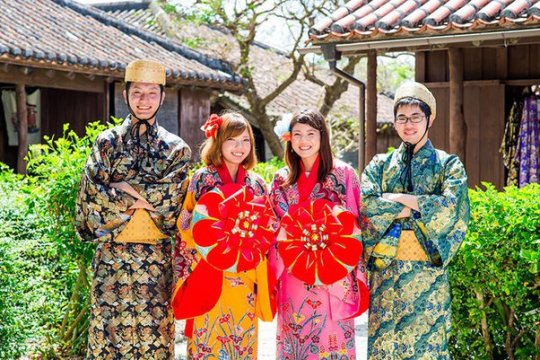
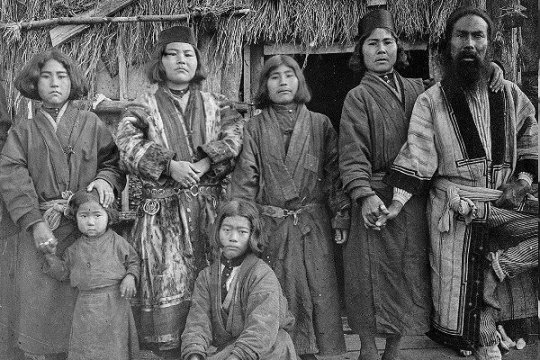

How many ethnicities are in Nipon(japan)?
Yamato Japanese 123,900,000
Ryukyuan Japanese1,300,000
Chinese 650,000
Korean 525,000
The Yamato people (大和民族, Yamato minzoku, literally "Yamato ethnicity") or the Wajin (和人, Wajin, 倭, literally "Wa people") is a term to describe the ethnic group that comprises over 98% of the population of Japan. Genetic and anthropometric studies has showed that the Yamato are an admixture of the migratory Kofun and Yayoi, who arrived from mainland East and Southeast Asia via the Korean Peninsula, as well as the indigenous Jōmon that were already living on the Japanese archipelago for thousands of years prior.
It can also refer to the first people that settled in Yamato Province (modern-day Nara Prefecture). Generations of Japanese historians, linguists, and archeologists have debated whether the word is related to the earlier Yamatai (邪馬臺). The Yamato clan set up Japan's first and only dynasty. The clan became the ruling faction in the area, and incorporated native Japanese, Chinese and Korean migrants. The clan leaders also elevated their own belief system that featured ancestor worship into a national religion known as Shinto.

The Ryukyuan people (Okinawan: 琉球民族 (るーちゅーみんずく), romanized: Ruuchuu minzuku or どぅーちゅーみんずく, Duuchuu minzuku, Japanese: 琉球民族/りゅうきゅうみんぞく, romanized: Ryūkyū minzoku, also Lewchewan or Loochooan)[8] are a Japonic-speaking East Asianethnic group native to the Ryukyu Islands, which stretch between the islands of Kyushu and Taiwan.[9] Administratively, they live in either the Okinawa Prefecture or the Kagoshima Prefecture within Japan. They speak one of the Ryukyuan languages, considered to be one of the two branches of the Japonic language family, the other being Japanese and its dialects. Hachijō is sometimes considered by linguists to constitute a third branch
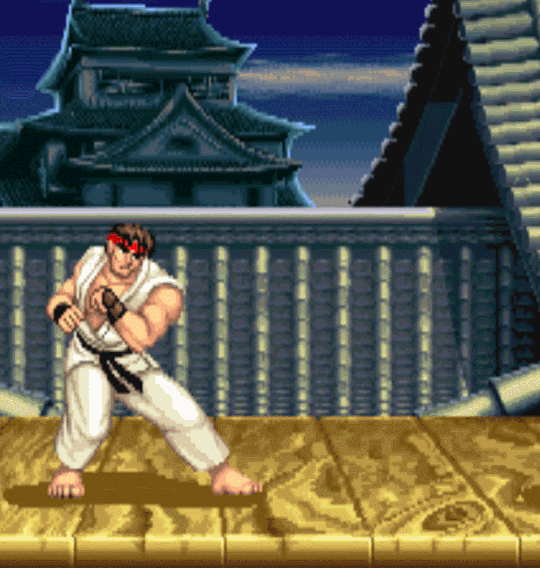
#ryukyuan#nippon#nipon#nihon#japan#kemetic dreams#yamato people#asian#east asian#east asians#ethnic diversity
7 notes
·
View notes
Photo
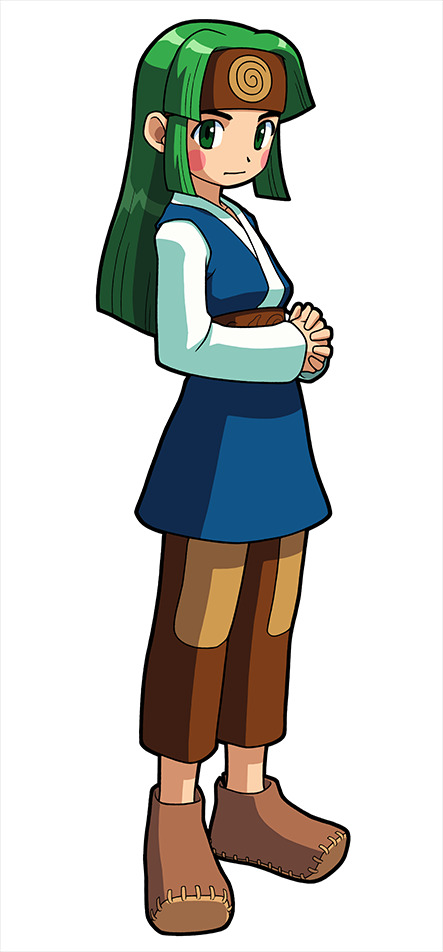

Capcom putting insensitive stereotypes of the indigenous people of Japan’s colonial holdings as side characters in their silly video game for children - during an era where the standard for popular portrayals of Ainu and Ryuukyuu culture was stuff like Pokemon presenting a vision of Okinawa populated exclusively by Wajin colonists and later doing the same thing again with Hokkaido (a mistake that they wouldn’t even try to correct until more than a decade after the fact) - and giving them no less attention and affection than the Wajin side characters
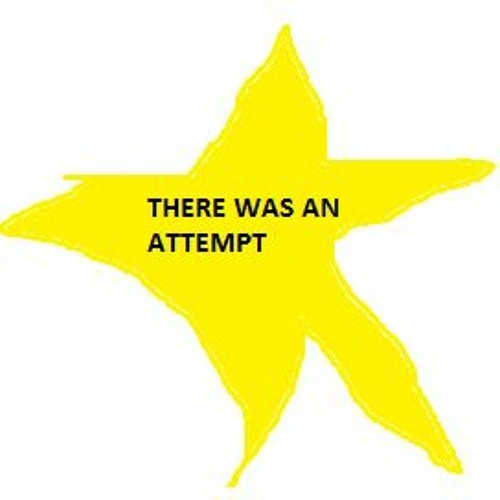
#this may come off as dismissive but I really do admire that yes. an attempt was made#and sal remains one of my favourite BN characters#mega man#battle network#mega man battle network#sal mmbn#saroma mmbn#lilly mmbn#ran igarashi#also. you know sal had to do it to em
7 notes
·
View notes
Note
I think that what’s not being considered is that there’s not too much Ryukyu or Ainu representation in anime? Those (and, like, Zainichi and such) aren’t heavily represented? I mean, Digimon Tamers was pretty cool, there was a Chinese main character and the protagonist was part Okinawan? It’s kind of dumb to expect large amounts of western demographics in Japan, but there’s more than just Wajin in Japan, you know?
It depends on how people look at representation. In one context, it could be see as one way, but seen as a different one in another context.
7 notes
·
View notes
Text
Beware Plastic Shaman
So some hafu white girl from Everett with a BA in farming calling herself an Ainu shaman wants to show up to Seattle and tell the BIPOC community what’s up. What’s a hometown kid to do?
What’s the sitch? Here’s the short version

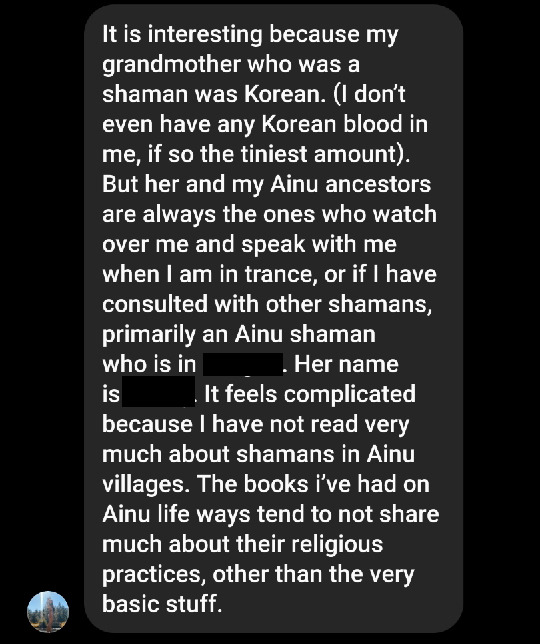
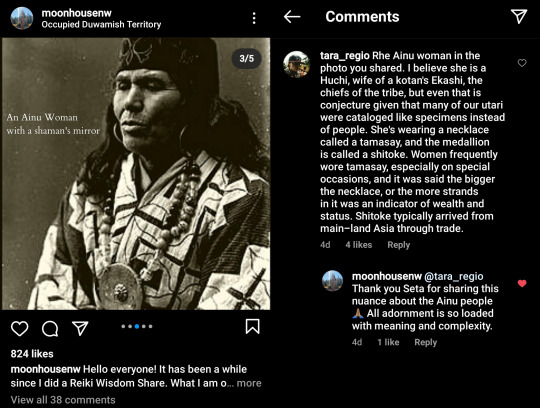
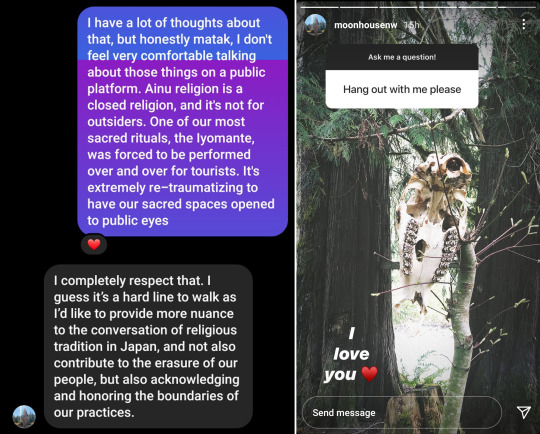
Myself, and members and elders of the Wakkotan and Atuy Kotan spoke with Marika Clymer on November 28, 2020. It was after this and these online interactions that we concluded that Marika Clymer speaks with no educational or experiential position of authority, has no respect for individual kotan or personal protocols, disrespects the hierarchy structure of our kotan, and spits in the face of our kamuinomi.
Within my unarpe’s Ainu In Diaspora group she has stepped in front of elders and knowledge keepers assuming positions of authority with no prior discussion, nor consent of the group runners.
Marika Clymer told us that she holds an Ainuic haplotype, and that someone told her she was special, and she is using this as justification to sell herself as a tourist minstrel Ainu without she herself having to experience the same financial and socio-economical burdens our Utari in Ainu Moshiri have to endure under direct colonization to survive and thrive through heritage craftwork.
This was an issue I had regarded as a semi-private inter-community issue, but Marika’s public financial exploitation of Ainuic heritage has put me in the position to either make a public statement, or be seen as quietly approving of her activities.
As an ambiguously Asian woman she has chosen to Orientalize herself as a “shaman” and grift an under educated Western audience who wants to buy off their white guilt for $1800
Marika Clymer walks like a colonizer and works like an information poaching culture-vulture. She has taken things my community educated her on, and presented them on her platforms without mention or credit of her sources to present herself as a gatekeeper of Indigenous secrets.
#Ainu#Ainu diaspora#Repunkuru#Marika Clymer#plastic shaman#racism#cultural appropriation#culture vulture#race faking#exploitation#colonization#Seattle#Everett#Washington#Washington State#King County#Snohomish County#Korean#Japanese#Wajin#shamanism
3K notes
·
View notes
Note
I remember coming across a rather strange discussion (which, unsurprisingly, was dominated by white folks) as to whether or not Wajin are native to Japan at all, citing weird theories and the like in order to continue their meaningless intellectual exercise. Ngl, despite it being nonsensical, it messed with me a little bit and sometimes I have these weird bouts where I doubts our "nativity" in Japan. Thoughts?
Let’s just get something out of the way. It’s a well known fact that a pure “Japanese”/“Yamato”/ Wajin race doesn’t exist. The average person of Japanese nationality is of mixed heritage, sharing genetic markers both domestic (Ainu, Ryukyuan) and foreign (Chinese, Korean, Taiwanese, Vietnamese). This is not a particularly unique phenomenon to most of East Asia. It’s important to recognize that political ethnic identities are very blunt tools when defining nativity.
In terms of Japanese history, it really depends where one cares to draw the line. Until the end of the Sengoku period, Japan’s history is one of repeated influxes of different populations, usually through trade and diplomacy, who would add their own cultures, traditions and languages to the existing landed population. This is why when we think of uniquely native “Japanese” culture, there’s really not much out there, barring Ainu and Ryukyu cultures that remained politically and culturally distinct from the Japanese mainland for long periods of time (A discussion of the destruction of cultural diversity and the detrimental effects of homogenization within the Japanese mainland post-Meiji can wait for another time).
Wikipedia has a nice article on the genetic history of East Asia that shows how well and truly mixed the entire region has been for most of its history. One must also remember the political use of the term “Yamato” is relatively new (circ. late 19th century). The notion of dividing the Japanese state between “Yamato”/ Wajin versus minority groups also emerges during this period. I’m not saying that subjugation of Ainu and Ryukyu groups hadn’t already started decades earlier, but this is the time where the Japanese state becomes truly invested in an “us” versus “them” mentality.
Thus, to me, the question “Are Wajin native to Japan?” is not very important. I’m not concerned so much with Wajin nativity as I am with questions like:
What does a state owe historically marginalized populations for oppression and genocide?
How should reparations to historically marginalized groups be effectively distributed and in what form?
How should a state meaningfully uplift existing marginalized groups?
The interests of Wajin drive the actions of the current Japanese state. That comes at the cost of other groups within Japan. I would argue the continued push by the state to persist in homogenizing Japan also doesn’t serve it well in an era of population decline and widespread stagnation. I can craft arguments for and against Wajin nativity, but these won’t help me determine how Japanese citizens should address the future of the country, irrespective of our individual backgrounds.
I know this isn’t quite the answer you were looking for, but I hope it was useful.
- Saitō
Other mods, thoughts?
47 notes
·
View notes
Text
it makes me sad to see ppl draw future aus of gk and they make asirpa just like a average school girl in a wajin household lmfao
3 notes
·
View notes
Video
Rasulullahﷺbersabda: “Jika seorang wanita menunaikan shalat lima waktu, berpuasa di bulan Ramadhan, menjaga kemaluannya dan menaati suaminya; niscaya akan dikatakan padanya: “Masuklah ke dalam surga dari pintu manapun yang kau mau”. (HR. Ahmad). - Share dan Follow @sunnaheverywhere #Repost @sunnaheverywhere - #muslimah #akhwat #shalihah #ukhty #wanita #ahli #surga #patuh #sunnah #wajin #sunnaheverywhere #Allah #tauhid #perhiasandunia hijrah #menjadishalihah #instamuslimah #besholehah #selfreminder (at Pontianak, Indonesia)
#selfreminder#patuh#instamuslimah#akhwat#allah#tauhid#besholehah#wanita#perhiasandunia#repost#sunnah#sunnaheverywhere#wajin#menjadishalihah#shalihah#ukhty#ahli#muslimah#surga
1 note
·
View note
Video
youtube
Warning: Potential spoilers
Title: Story of Us
Editor: Wajin Shu
Song: The Story of Us
Artist: Taylor Swift
Anime: SKET Dance
Category: Romance
#anime#amv#romance#sket dance#taylor swift#video#music#song#youtube#editing#story of us#Sket Dance AMV [Bossun x Himeko] Story of Us#wajin shu#the story of us
3 notes
·
View notes
Text
Yg membedakan kondisi tiap orang itu cuma beda prioritas saja.
Ada sibuk bekerja. Ada yg sibuk cari ilmu ... ada yg sibuk nolong orang, ada yg sibuk ngurus keluarga, ada yg sibuk ibadah, dll...
Tdk ada yg sempurna dlm segala hal.
Sesuatu yg qt anggap kekurangan dalam diri seseorang adalah kelebihan dr sisi lainnya yang tidak qt lihat. Dan dari semua itu kita tidak tahu jalan mana yang lebih mengantarkan seorang hamba ke surga. Yg pasti, segala sesuatu yang dibangun atas dasar ketaatan serta niat karena Allah itu baik dan pasti kan bahagia.
Jika mesti memilih apa yg harus diprioritaskan maka idealnya dari yg paling utama yg Allah syariatkan , karena perintah dan larangan Allah juga memiliki skala prioritas, bertingkat2, berderajat2 makanya ada hukum wajin dan sunnah. Dan tentu itu harus dimulai dari amal2 yang wajib, hal2 yang tidak bisa diulang perannya ketika lapang , dan perkara2 yg tdk akan disesali seandainya qt meninggal esok hari.
#islam#istiqomah#tawakal#takdir#cinta#pernikahan#surga#iman#taqwa#inspirasi#motivasi islami#selfreminder#islamic quotes#sabar#syukur#ikhlas#islamic reminders
37 notes
·
View notes
Note
hey thanks for translating gk interviews in ur free time and making it accessible for en fans! i have a question abt the kotoba interview u covered; when noda states the relevance of older ainu partnerships like inkarmat and kirawus, is he naming them as the romantic ainu counterparts to off-balance the main platonic duo of asirpa and sugimoto? or are they just duos hes named regardless of being romantic or platonic?
he's saying that he tested different combinations of wajin man + ainu partner. sugimoto and asirpa are wajin man + young ainu girl, tanigaki and inkarmat are wajin man + adult ainu woman, kadokura and kirawus are wajin man + adult ainu man and tanigaki and cikapasi are wajin man + young ainu boy. asirpa and sugimoto as a dynamic was the most well-liked so he concluded that he made the right choice of making the ainu main character a young girl
2 notes
·
View notes
Note
Sofia's death is not emotional at all for me, which is a shame. I really like her and want to at least feel sad or sth if/when she dies, but nope.
It feels like all the other deaths are written with more thoughts put into them. I didn't like Nikaidou at all but his death made me bawl my eyes out. Like he's finally get to reunite with his twin in a weirdly poetic albeit gruelsome death.
What would you want Sofia's death to be like, if I may ask? Like what do you think is a satisfying end for Sofia?

Sorry if I placed together these two asks but, as they talked of similar things, I thought it would work better.
The way Sofia was handled just makes me sad. I’m still trying to be positive and hope Noda will rewrite her death scene in the volume version, but overall I don’t think he’s that interested in it.
I understand from where he’s coming.
Golden Kamuy is a manga aimed to Wajin men, Sofia is a Russian woman, he might feel they wouldn’t be that interested in her so he just made her into a plot device like... almost all the foreign characters.
Since he has to sell his story to adult Wajin male readers it makes sense he would put special attention to characters his readers can identify with, and not to characters they can’t identify with.
As I’m a foreign readers instead, for me all the characters feel equal so I wish for all the characters to get the same amount of attention... but I’m not really into his intended audience so he doesn’t have to bother to satisfy me.
What would I think would be a satisfying end for Sofia, then?
Hum... this is going to open a long discussion.
From a storytelling point of view a ‘satisfying’ end would be one that ties in well with her whole character arc, for example seeing her accomplishing something she wanted to accomplish (think to Koito senior managing to destroy the cannon before sinking with his ship or Toni managing to return the favour to Hijikata by saving him) or gaining something she longed to have (think Nikaidou who gets to see his brother, think Usami who heard Tsurumi say the things he wanted him to say) or even knowing the future she longed to make true will be eventually realized (think Kiro believing Asirpa would guide them toward a better future or Kikuta thinking Sugimoto will put a end to Tsurumi).
Less satisfying but still emotionally satisfying would have been a sudden death when we weren’t expecting it (think Wilk being shoot in front of Asirpa or also at what we believed could be Ariko’s death).
It’s worth to point out Noda tried to do give Sofia a satisfying end... but it didn’t come out as good.
Overall the key problem is Sofia’s character arc wasn’t handled that well, possibly because the plans for her changed.
Let’s look at Sofia’s story, giving special attention to her goals and dreams.
We are introduced to her and her goal through Kiro’s memories.
1) We’re told she is a revolutionary (革命家 ‘kakumeika’), therefore someone who wanted to bring an abrupt, rapid, and drastic change in Russia, a revolution in short, that would improve the lives of the people living there.
For comparison, Wilk and Kiro were instead partisans (パルチザン), people member of an irregular military force formed to oppose control of an area by a foreign power or by an army of occupation (the Russian empire in short) and who do some kind of insurgent activity to resist/oppose to it.
Sofia’s group used assassination as a means of exerting pressure on the government in order to force it to make reforms.

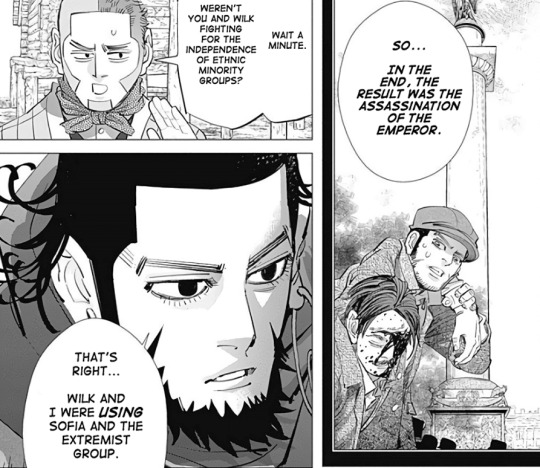

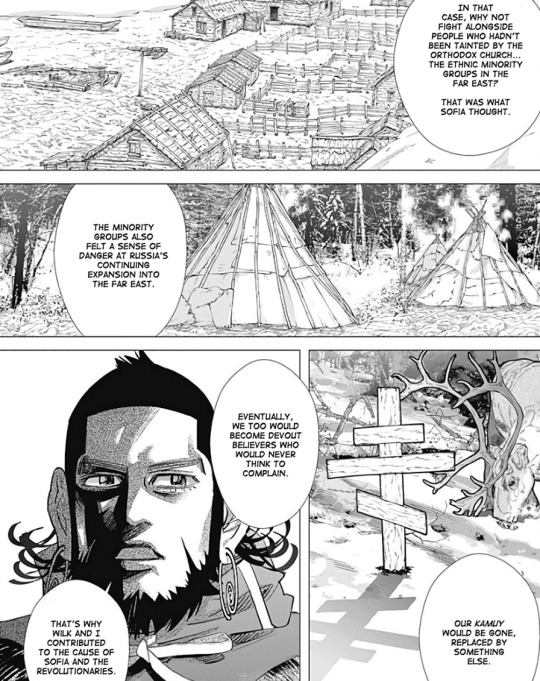
Noda spent quite a bit of pages and balloons explaining what the revolutionaries wanted and how Kiro and Wilk were instead partisans, therefore belonging to a different group and how the goal of the revolutionaries and the one of the partisans came to overlap although ultimately both groups WERE USING EACH OTHER.
We’re also told when Sofia decides to remain in Russia and not to go in Hokkaido she still views herself as a revolutionary.
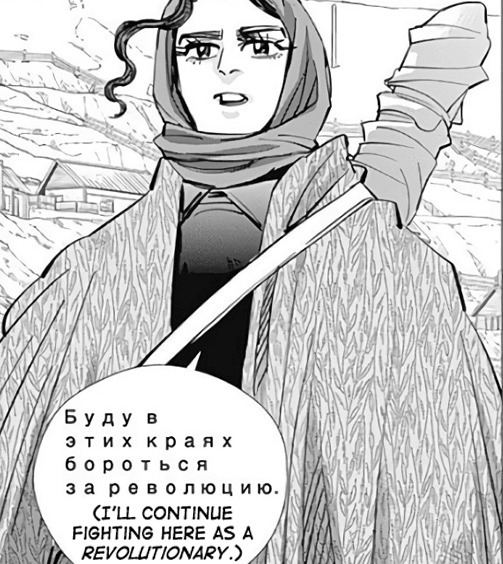
In short her goal should still be bringing the reformation of Russia through a revolution.
Sure, when she’s in Akou prison, we’re told she’s jailed along with ‘comrades’ who tried to gain independence for the ethnic minority groups in the far east...

...but since she was already cooperating with them, the first impression isn’t she has stopped being a revolutionary and became a partisan, but that they’re just still cooperating and, incidentally, Sofia ended up in a prison with more partisans than revolutionaries or, there were also revolutionaries there but Kiro counted more on the help of the partisans there.

Never Kiro says Sofia is no more a revolutionary but became a partisan so we assume she still is a revolutionary despite whoever is with her in the prison.
2) Then we learn Sofia fell for Wilk... but ultimately gave up on her dream to have a family with him. As she did this out of guilt, her dream of having a family with Wilk might be still alive in her, kind of like how Kiro never stopped loving her although he cared for his wife and children.

3) At the same time as we learn this, we also learn of her terrible sense of guilt for believing she was the one who killed Fina and Olga. This is why she feels she’s not entitled to have a family, this is probably also why she now feels even stronger the need to keep on fighting so that their sacrifice won’t be for nothing, which ties to her first goal, bringing the reformation of Russia through a revolution and somehow got in the way of her dream, having a family with Wilk. This can, in short, for a third goal/dream, redeeming herself due to her having killed Olga and Fina.


I’ll discuss about this goal again later so, for now, just keep it in your mind.
4) Upon meeting her Sofia will immediately bond with Asirpa. It’s clear just by the way she looks at her she has motherly feelings for her. Later, when facing Tsurumi, she’ll also say she too, like Kiro and Wilk, views Asirpa as ‘their hope’. This doesn’t necessarily mean she wants her to fight as the leader of the Ainu, in fact later on she’ll say Asirpa’s future is Asirpa’s to decide. Still, we can speculate now she also have the goal to protect and help Asirpa, which she’ll prove by trying to protect her when she think she’s in a bag on Tsukishima’s horse that was falling off of it. We’ll see Sofia not hesitating at all in trying to protect Asirpa from the fall, sustaining an injury herself in order to do so.
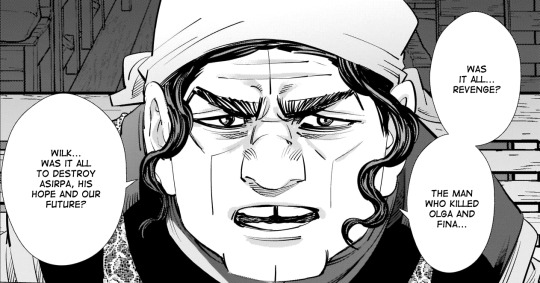
5) As she talk with Asirpa we learn Wilk taught her about minorities and shared HIS goal with her. While Sofia, once they parted ways, continued to define herself as a revolutionary, therefore keeping her original goal to bring revolution in Russia in order to improve people’s lives as her own priority, we can assume she sympathized with Wilk’s goal and would have helped him to carry it on.
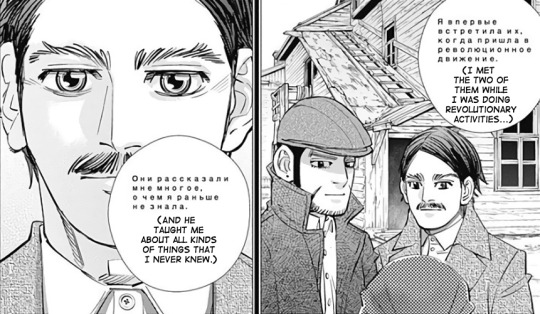

We’ll discuss about this as well later on.
6) Another goal Sofia clearly had was avenging Kiroranke. She’ll made clear she plans to go to Hokkaido for the sake of their hope and their revenge and when she met up with Tsukishima and Koito she’s literally radiating murderous intent to the point it makes Tsukishima shiver and warn Koito about her.



7) Lastly, Sofia was an awesome leader, beloved by her men but who clearly cared about them as well. She doesn’t let them sacrifice their lives so she can escape and she personally goes to search for a doctor for them when they’re sick. She also asks for their support when she decides to fight along with Hijikata. So we can assume a more specific branch of her goal of helping people in Russia by improving their lives by bringing revolution was protecting her men.


Those are Sofia’s goals as presented in details by the manga prior to Vol 27. If Sofia were to be killed before Vol 27 I would have expected her death to involve one of those points, allowing her to fulfil it, and so die accomplishing something (be it saving Asirpa or some of her men or avenging Kiro), or giving her something she has lost and longed to get back along the way. For example if in her final moments she has seen Kiro and Wilk, or even Olga and Fina, or had a vision of an improved Russia or of how her men would ultimately improve it, I would have been fine with her death.
But things in Vol 27 started to get messier.
Why?
In Vol 27 Sofia learns SHE DIDN’T KILL OLGA AND FINA, it was Wilk who did it. Sofia’s group also knew they weren’t the ones who drag the secret police there, as the secret police was after Hanazawa, who was a spy and who, therefore, with his work, endangered Olga and Fina. What’s more, Tsurumi already made clear he doesn’t resent her, he claims he’ll tell her the truth to free her from her guilt. While he also tells her the truth so as to push the blame on Asirpa’s father and, therefore, on Asirpa, it’s clear he doesn’t hold her accountable. Although Sofia clearly feels pity for Tsurumi, she also clearly realizes his hate is focused on Wilk, not on her. He blames Wilk, Sofia is not guilty in his eyes.
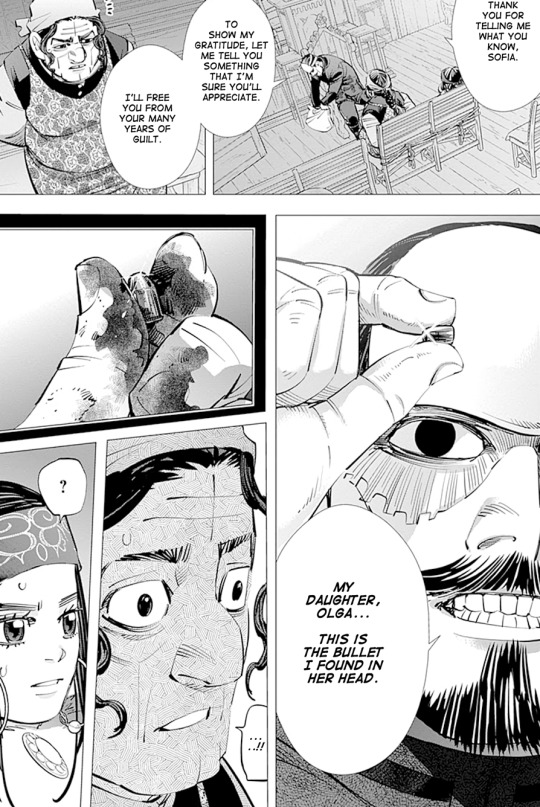

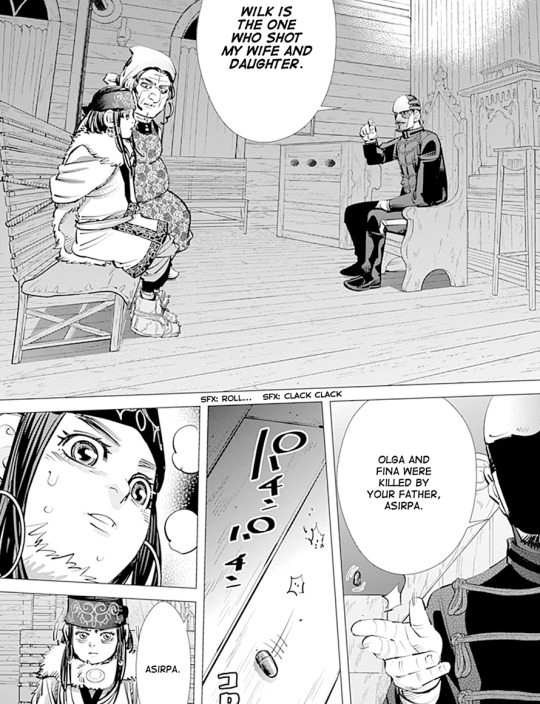
Technically this should have put an end to her sense of guilt and, if Sofia had been given this revelation by Tsurumi while she was dying and finally found peace because she discovered she wasn’t the one killing Fina and Olga, it would have worked well. The story built on her grief for that fact, both in the flashback in which we learnt of it and in the church. Sofia is shocked when she realized Tsurumi is Hasegawa, as the discussion progresses she lowers her head and thinks at Fina and Olga, she can’t look into Tsurumi’s face and ends up seeing their finger bones instead and this shock her again. Tsurumi used her guilt to force her to talk about what Kiro told her, and she does so, crying. We feel her pain and we would have been content if she could be released from it.

Only... she doesn’t die in that moment but, for us readers, that revelation should have put an end to that goal, to her guilt. Sofia never brings up Fina and Olga again, we can assume that, like Tsurumi said, she was freed.
Therefore we remains with the other 6 goals:
1) bringing the reformation of Russia through a revolution.
2) the, by now impossible to fulfil, dream of having a family with Wilk.
3) protecting and helping Asirpa.
4) sympathizing with Wilk’s goal and helping to carry it on.
5) avenging Kiroranke.
6) protecting her men.
But then, in Vol 29, there’s another shift.
All of sudden she decides she’ll devote herself to carry on Wilk and Kiroranke’s partisan dream.
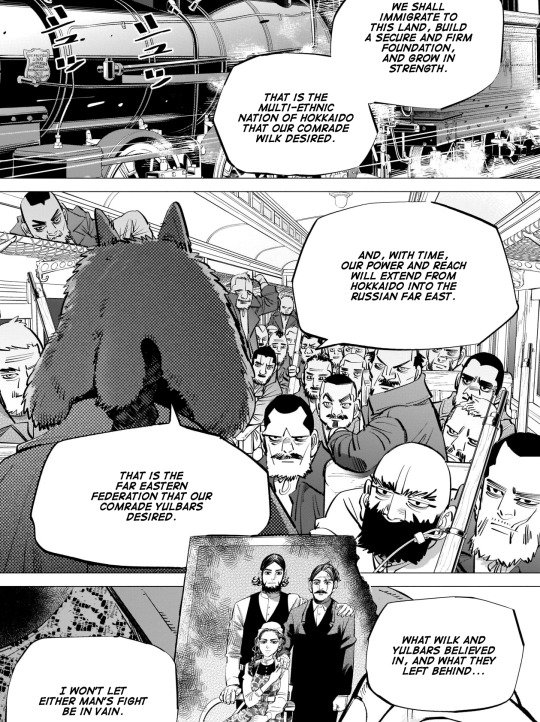

While not explicitly stated, this implies she’ll drop her own revolutionary dream, the dream due to which she got involved in all this, the dream due to which she remained in Russia to fight for revolution.
In fact it’s not she says she’ll just help their dream to come into fruition and then devote to her own, she mentions solely Wilk and Kiro’s dream. There’s no more ‘and once the far east federation is created we’ll go and cause revolution in Russia’. She and her men will move to Hokkaido, will devote to improve and expand that place and gaining for it and the far east land of Russia, independence.
Nor Sofia, nor her men, talk about the rest of Russia.
Now, as said before, it can be that all the men who had followed her to Hokkaido or, at least, a lot of them, were actually not revolutionaries but partisans from Russian minorities.
I might be mistaken but it feel hard to believe the revolutionaries just had a ‘revolutionary part of their group’ solely devoted to gain independence for the minorities and uncaring of the rest of Russia.
This would mean the ones who will fight in Fort Goryokaku weren’t just Russians... but Russian minority members. We know Mansur had a Tartar name so this might support this theory (through we know it thanks to ehscans, Noda didn’t inform us of that). However, apart for that mention long ago about Sofia having men who weren’t defined as partisans or members of the minorities but just members who fought with her to try and gain independence for the ethnic minority groups in the far east and Mansur’s name, we don’t really have a clear statement about this.
We’re just asked to assume Sofia, along the way, supposedly completely dropped her revolutionary goal to improve Russian people’s lives, people like Fina and Olga, and merely fought for the far east minorities, becoming their leader.
Now... I’m not saying it can’t happen, just that it’s not really smoothly written because we left her in Russia as a revolutionary and puff... when we met her in Karafuto she’s a partisan.
In real life it can happen someone will abruptly shift his goals, but in a story the shift needs to be explained.
[Besides this doesn’t really make the whole battle in Goryokaku really a nice thing as the Ainu, who are the legitimate owners of the gold and the land deed, aren’t really fighting in it (Asirpa doesn’t fight, Kirawus helps a little) and their group is fundamentally represented and lead solely by Japanese men. Who’s fighting are the Russian minorities, only they aren’t really acknowledged as such and readers end up viewing them merely as Russians, never mention they’re lead not by another member of the minorities but by a Russian, Sofia, only to be completely wiped out by the ones who prevailed at 203 meter hill and the Siege of Port Arthur, the 7th division, the strongest in the army.]
Whatever, in an unclear way Sofia has tossed away her own revolutionary goal, had become a partisan leader and has decided to devote herself to Wilk and Kiro’s goal.
This is her new main goal.
Because the plot needs red shirts to die at Goryokaku and she conveniently has a bunch of them.
So, at this point, we should expect her last moment to be strongly tied to this new shiny goal, for which she sacrificed all, or almost all her men, as the 7th division trashed them and a bunch of them even died protecting her from harm.
Only no, Noda goes and shows us that discovering she wasn’t the one to shoot Fina and Olga changed nothing, because now she blames herself for how she, Wilk and Kiro went in Tsurumi’s house and THIS IS HER MAIN REGRET AND THE THING SHE GETS SOOTHED ABOUT BY TSURUMI.
It’s true, in the discussion in the church, Tsurumi tried to blame Fina and Sofia’s death on her group for the mere fact they came to his studio...

... but, as mentioned before, in that same discussion, Tsurumi absolved her from the blame of killing Fina and Olga, giving to the readers the impression that, with this, Sofia’s guilt should end. It was Wilk the one he resented for murdering his wife and child, even Sofia got it and, after discovering all this, Sofia wasn’t anymore passively giving in to Tsurumi’s requests.
She faces him, asking him if he’s doing all this out of revenge toward Wilk (implying she knows he’s not blaming her anymore) and, when Tsurumi pressures Asirpa into cleansing her father’s sins by telling him the code, she tells her not to do it.
She’s no more someone overwhelmed by guilt, she’s someone who can face Tsurumi and fight back. When they escape she goes so far as to toss a bench in his direction, which could have seriously injured or even killed him (although the whole thing ends up being a funny moment) and then she escapes with Asirpa and agrees to fight against Tsurumi’s forces. She never, ever mention Fina or Olga, or acts as if she feels bad for Tsurumi and the pain he went through when he lost his daughter and wife.
What’s more, regardless of labelling Sofia a revolutionary or a partisan, she’s a woman who murdered people and carried on violent actions in which people died. When Wilk murdered one of her companions, although she felt she wouldn’t have been able to do the same, she agreed with his actions, she didn’t spend her life feeling bad for not stopping Wilk or for leading that man to death... and she’s not freezing now that her men are dying, even sacrificing themselves to protect her.
I can understand her feeling bad for believing she personally shoot two innocent people she grew fond of. I can understand she feels a lot of pain for it and that she can even pity Tsurumi.
But it feels hard to believe someone like Sofia could feel so responsible for causing such an indirect death she would let Tsurumi shoot her.
This is something Asirpa can do as she has never murdered anyone and never intended to do so, but not the Sofia Noda painted till now.
He would need to build on this, to make it believable, to build on how Sofia, despite everything, would still feel guilty for being indirectly involved in those specific deaths... instead than just acting as if we would feel natural she would do so and, honestly, I’m surprised he didn’t feel the need to build on this, since he felt the need to build on Sofia feeling bad for shooting Fina and Olga, a much more serious crime.
Of course it can be that the idea is she’s feeling bad for Tsurumi, who basically went through the Sekiya route and went mad.
To be honest, the visual doesn’t really support this, although in the church Sofia showed some measure of pity for him along with Asirpa...
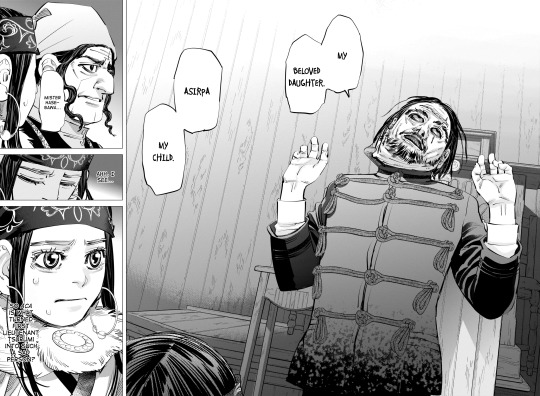
...and when she was about to shoot him she saw Hasegawa...

...so maybe the idea is that now she feels guilty TOWARD HIM, which is why she needs him to forgive her.
This though is even more indirect than just feeling guilty toward Fina and Olga.
Because they went there, Wilk by mistake ended up shooting Fina and Olga (which I’m sure it’s the truth but, as far as Sofia knew, could have been a lie Tsurumi made up to manipulate Asirpa into telling him what he wanted) and although she told Asirpa she shouldn’t give in to Tsurumi’s demands, she now feels so bad for how he felt pain for his loss (a thing he denied and used against them) she let him shoot her and apologizes to him.
And, whatever, it can be but the key here is that neither her feelings in this regard were developed nor Tsurumi was painted in a very sympathetic light so as to make us feel it’s right for Sofia to die in order to apologize to him.
I mean, I’m sure Wilk by mistake killed Fina and Olga and I’m sure Tsurumi suffered for it, but while Sekiya (who still wasn’t a very sympathetic character) was a poor man doing nothing wrong when his daughter was murdered, Tsurumi was a man who put at risk Fina and Olga’s lives with his work and who willingly welcomed Wilk and Co over and over in his house even though he figured who they were.
Fina and Olga are victims... he... not so much as he caused his own misfortune with his work and with his behaviour. Instead than knocking off Wilk and Co when they tried resisting, he gave them weapons to keep on fighting. Wilk might have not dared going out of the house without Kiro’s covering fire.
But Tsurumi pushes all the blame on Wilk and, since Wilk is dead, he’s willing to deliberately make Asirpa, pay for all this... and Sofia knows, she knows he’ll go after Asirpa, their hope, Wilk’s daughter... and can’t make herself shoot him but apologizes to him.
So okay, I get what Noda was trying to do and it could spin a wonderful discussion about guilt, Sofia’s guilt which is still so overwhelming it stilled her hand, Tsurumi’s guilt which he’s unable to face so he pushes it on Wilk, Wilk’s guilt that’s forced on Asirpa who also feel guilty for Sofia’s death... this was all GREAT fuel for discussion.
But the building is poor.
When Sofia let Tsurumi kill her, I can understand her moment of hesitation and how it would give Tsurumi the time to fire her.
It makes her a great character, the fact she would still keep her humanity and hesitate in the rush of the action.
But that, in her final moments, all she worries about is saying sorry to Tsurumi who has just wounded her to death, doesn’t seem fitting with her since she previously went in his way to protect Asirpa and their hope, nor does seem to make sense the fact that she finds peace because Tsurumi, who had made clear he had no grudge toward her because the one he hates is Wilk and told her the truth to free her from the guilt of murdering Fina and Olga, tells her he forgives her.
That bit feels rushed, we, as readers, don’t feel sympathy for Tsurumi even though intellectually we know his loss pained him (though we also know part of his insanity is due to his brain wound, not due to his loss) and we’re kind of surprised by how Sofia would keep on beating herself for something in which in truth she only had an irrelevant role.
It’s because Tsurumi was a spy that the Russian police came there.
It’s because he accepted to teach them Japanese and didn’t send them away when he discovered who they were that they too came there that day.
It’s because instead than surrendering he handed Kiro weapons they could fight so boldly.
And it’s because he didn’t come clear with Fina that she came back.
Sofia can, of course, still feel guilty but, if Noda wanted the readers to focus on this, he needed to develop this part more because it came as a surprise.
If I’ve to rationalize why she would feel guilty, it means I don’t immediately empathize with her, so the drama of the moment is lost.
As a reader I would expect her to blame herself for her men’s death, (they even sacrificed themselves to protect her!) or worry for not managing to protect Asirpa, to be there for her when she would need it, to burden her further by dying in front of her, since Sofia knows the meaning of guilt.
Or I would expect her to be more bittersweet, focused on the future. She couldn’t make herself stop Tsurumi because her past tied her down, but Asirpa would still manage to bring a new future... or more protective, trying to get Tsurumi to see that Wilk might have wronged him but he can’t push the blame on Asirpa, she’s as innocent as Olga was.
Wilk is dead, there’s no point taking out on his daughter, Asirpa doesn’t have to pay for her father’s sins.
In short I would expect Sofia’s death to be more focused on the goals I mentioned previously, and which were well built.
This new goal of Sofia now feeling guilty for just having been there and wanting to be forgiven was not built at all, it was something Tsurumi tossed in and pulled back in THE SAME DISCUSSION and was then dropped entirely.
It ties well with him, giving him a chance to make clear how he wants revenge on Wilk, because Noda built on this, on how he had to hide it because his men where outside the room, eavesdropping so he couldn’t even voice this but make another promotional, manipulative speech for them to swallow.
It doesn’t tie well with Sofia, as her original guilt was because she believed she killed Fina and Olga and having Tsurumi shift it to ‘you were there’ only to absolve her a moment later because ‘hey but it wasn’t you who pulled the trigger’ and never build on it again, causes it not to feel tied to her at all because Noda stopped completely to focus on her after she left the church with Asirpa.
We only have few moments with Sofia before her death, one when she basically put herself and her men under Hijikata’s orders, which tells us nothing really, the other when she explains to her men her own reasons and shiny new goal (fulfilling Wilk and Kiro’s goal) and the last was when she told Asirpa to decide by herself her own future.
The other times in which she appeared were all of her merely fighting bravely, fighting no matter what happened, refusing to retreat, refusing to stop even if her men died, refusing to escape and leave them behind.
There’s no mention of Tsurumi, or Fina and Olga. There’s no building, we assume it’s a closed chapter. If Noda, in the volume version, will work on this, Sofia’s death will definitely feel different. As it was it felt lacking in the magazine version, and left me with a bitter taste in my mouth.
We’ll see, Noda might have cut those parts merely due to a lack of time, we know he redraws plenty of things for the volume version so Sofia’s death as it is might not be all lost. It needs working though... or a change in direction so that the focus will be more on what Noda developed with Sofia.
For now we can only wait and see.
#Sofia#Wilk#Tsurumi Tokushirou#Hasegawa Fina#Hasegawa Olga#Asirpa#Kiroranke#Koito Heiji#Toni Anji#Hijikata Toshizou#Nikaidou Kouhei#Nikaidou Youhei#Usami Tokishige#Kikuta Mokutarou#Sugimoto Saichi#Ask#Ariko Rikimatsu#Tsukishima Hajime#Koito Otonoshin#Tanigaki Genjirou
20 notes
·
View notes